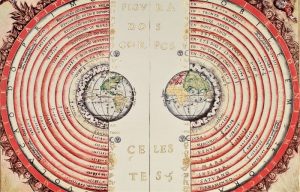Planck time
When it comes to dealing with and talking about very small things, using Planck time is the measure of choice. It was named after the German physicist Max Planck, who was the founder of quantum theory. A unit of Planck time is the time it takes for light to travel, in the emptiness. When Planck are taken together, they become part of the larger system of natural units known as Planck units.
What is Planck time?
Planck time is a unit of time that is considered to be the smallest time interval that can be measured, or in other words, that can make sense.
About Planck time
In order to understand Planck time, we must first study and examine a concept related to the definition, the Longitude Planck. Very much like time, one can do a mental exercise in which one takes a meter and divides it in half and so on, asking the question once again how far one goes, whether there is an end or not, or whether everything continues to infinity.
Very similar to Planck time, there is also a limit between the distances to which the name Planck Length is given, which according to calculations in quantum mechanics, is the smallest distance that “makes sense” in the quantum world.
It is then concluded that Planck time is the time it would take for a photon of light traveling at the speed of light over a distance equal to Planck’s Length, that is, the shortest length a photon can travel in this Universe. This time lapse is known exactly and is equal to 10-43 seconds, or in more familiar terms 0.00000000000000000000000000000000000000000000000000000000001 second.
Characteristics
Its most important characteristics are the following:
- It represents the time that a photon lasts when it travels at high light speeds in order to pass through a distance equal to the length of Planck.
- From the point of view of quantum mechanics, it represents the minimum unit that could be measured at first.
- In the area of cosmology, it represents the smallest instant of time in which the laws of physics could be used to study the nature and evolution of the Universe.
- At Planck time, light in a vacuum travels approximately 1.62 ×10-35 m.
- Planck’s natural units are known among physicists as “the units of God” because depending on physical constants their use eliminates the anthropocentric arbitrariness in the system of units.
- At the time Planck presented his proposal about time, Quantum Mechanics had not yet been invented.
History
It was originally proposed in 1899 by the German physicist Max Planck. He suggested that there were some fundamental natural units for measuring length, mass, time and energy. These Max Planck derived using dimensional analysis using only what he considered the most fundamental universal constants: the speed of light, Newton’s gravitational constant, and Planck constant. Many physicists consider Planck time to be the shortest possible time interval, however, this is still under discussion.
Planck also argued that this system of natural units would always remain the same as long as the law of gravity, which depends entirely on the constant of universal gravitation G, the velocity of light in vacuum c, and the principles of thermodynamics, did not present any kind of variation.
What is the Planck time for?
Planck time is a law of physics that has been used to study the nature and development of the universe. It also serves to find out the smallest interval that can be measured which is determined by knowing how long it takes light to travel the length of Planck, which is the smallest distance that can be between two points in space, and where the forces of the universe can act.
How it is calculated?
The Planck time is calculated using the following formula:
Tp= √(hG/c5) = 5.39106(32) * 10 -44 seconds
Where:
- H is the reduced Planck constant (also known as the Dirac constant)
- G is the universal gravitational constant;
- c is the speed of light in vacuum.
Importance of Planck time
The Planck scale is important because it reflects the smallest recognized physical theory that recognizes that atoms are enormous. It has resulted in many physicists believing that space and time are granular, rather than continuous. But the size of the space grains compared to an atom would be about the same as the size of the atoms compared to the sun. And the size of time grains would be compared to one hundredth of a billionth of a second, much more than the one hundredth of a billionth of a second of the age of the universe.
How to cite this article?
Briceño V., Gabriela. (2019). Planck time. Recovered on 23 February, 2024, de Euston96: https://www.euston96.com/en/planck-time/










